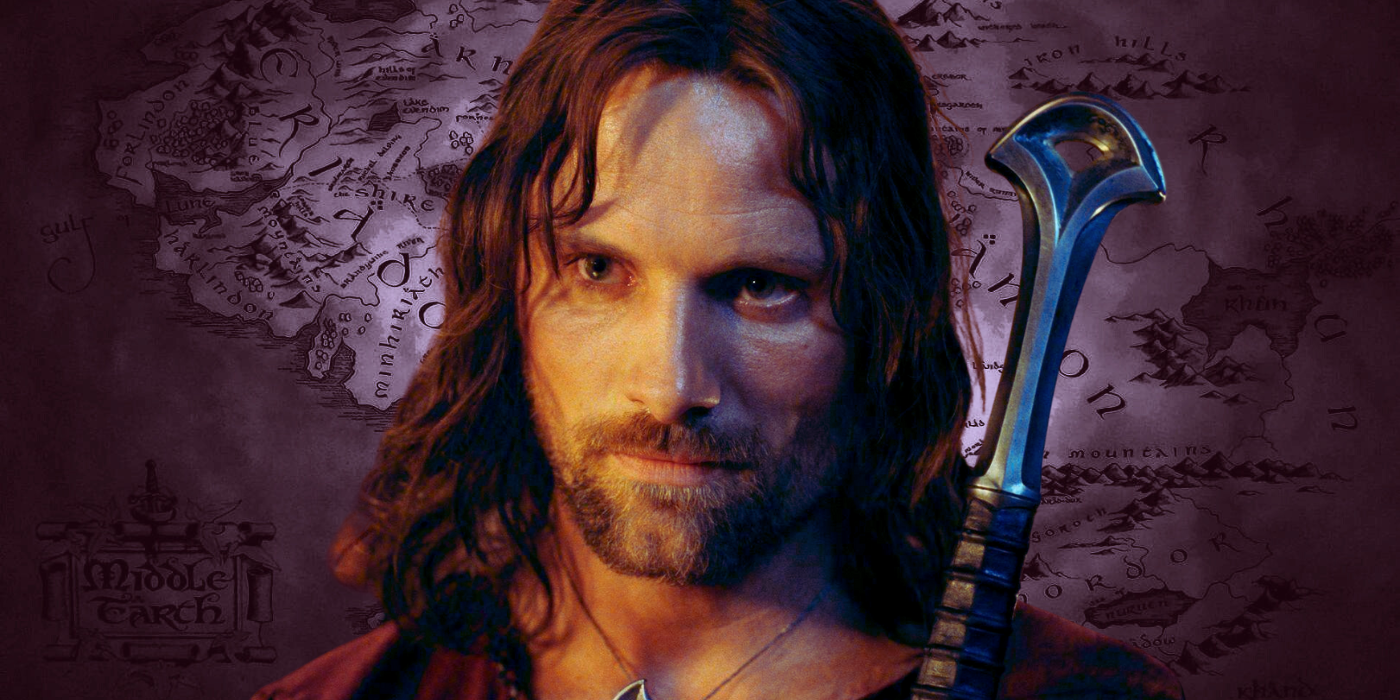
Jackson’s additions to the Battle of Helm’s Deep are relatively well-known. He increased the tension of the scene by having Rohan’s civilians join the soldiers in Helm’s Deep instead of traveling to Dunharrow like in J. R. R. Tolkien’s novel. More famously, he introduced an army of Elven archers led by Haldir to lend aid to the defenders. These are common talking points among fans of The Lord of the Rings, but Jackson’s omissions from the Battle of Helm’s Deep are more obscure. For example, in the novel, Saruman’s army included Dunlendings and Half-orcs in addition to Uruk-hai. Even stranger, Aragorn had a surprisingly civil conversation with Saruman’s forces. Just before King Théoden led a charge onto the battlefield, Aragorn parleyed with the attackers. This scene showcased what made Aragorn so exceptional even among the other mighty heroes of The Lord of the Rings, but Jackson had a good reason for leaving it out of his film adaptation.
Aragorn Did Not Fear Saruman’s Army of Uruk-hai
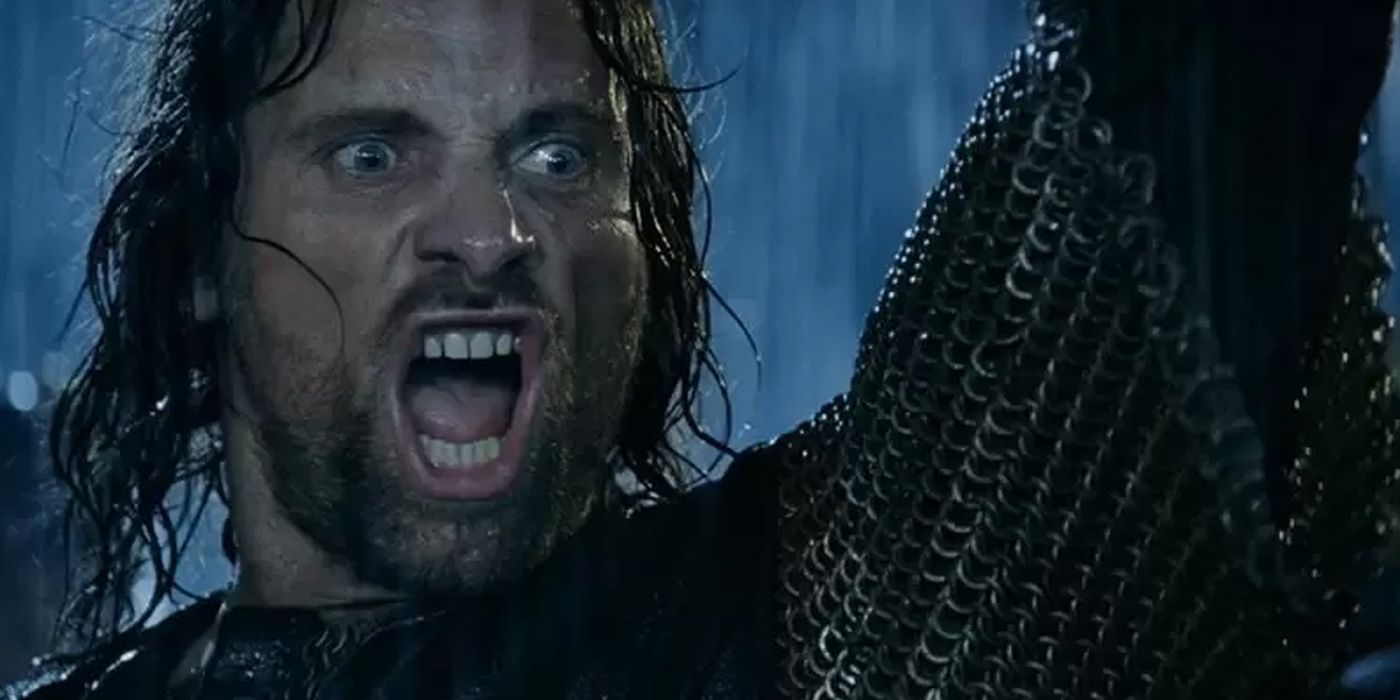
When Aragorn refused, they asked what he was doing if not surrendering, and he replied that he was simply “look[ing] to see the dawn.” They believed that he was referring to the Orcs’ fear of the sun, and they gloated that “the fighting Uruk-hai” possessed no such weakness. In truth, Aragorn wanted to scan the horizon for Gandalf. The sky was indeed starting to lighten, but reinforcements had not yet arrived, so the Rohirrim needed to hold out a little longer. Aragorn then issued a warning to the Uruk-hai and the rest of Saruman’s minions. He declared:
“None knows what the new day shall bring him… No enemy has yet taken the Hornburg. Depart, or not one of you will be spared. Not one will be left alive to take back tidings to the North. You do not know your peril.”
This was partially meant as a threat to intimidate his enemies, but Aragorn genuinely wanted to avoid further bloodshed if possible.
Aragorn Wanted a Peaceful End to the Battle of Helm’s Deep — But It Was Not Meant to Be
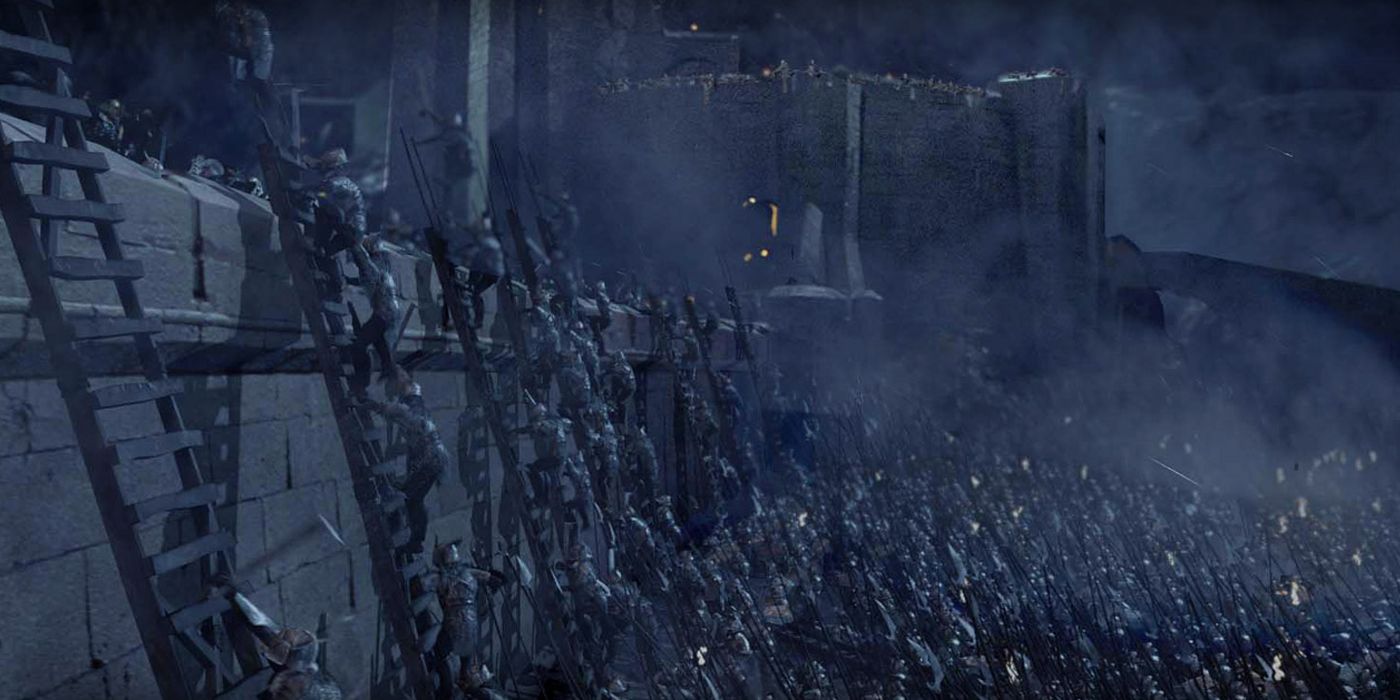
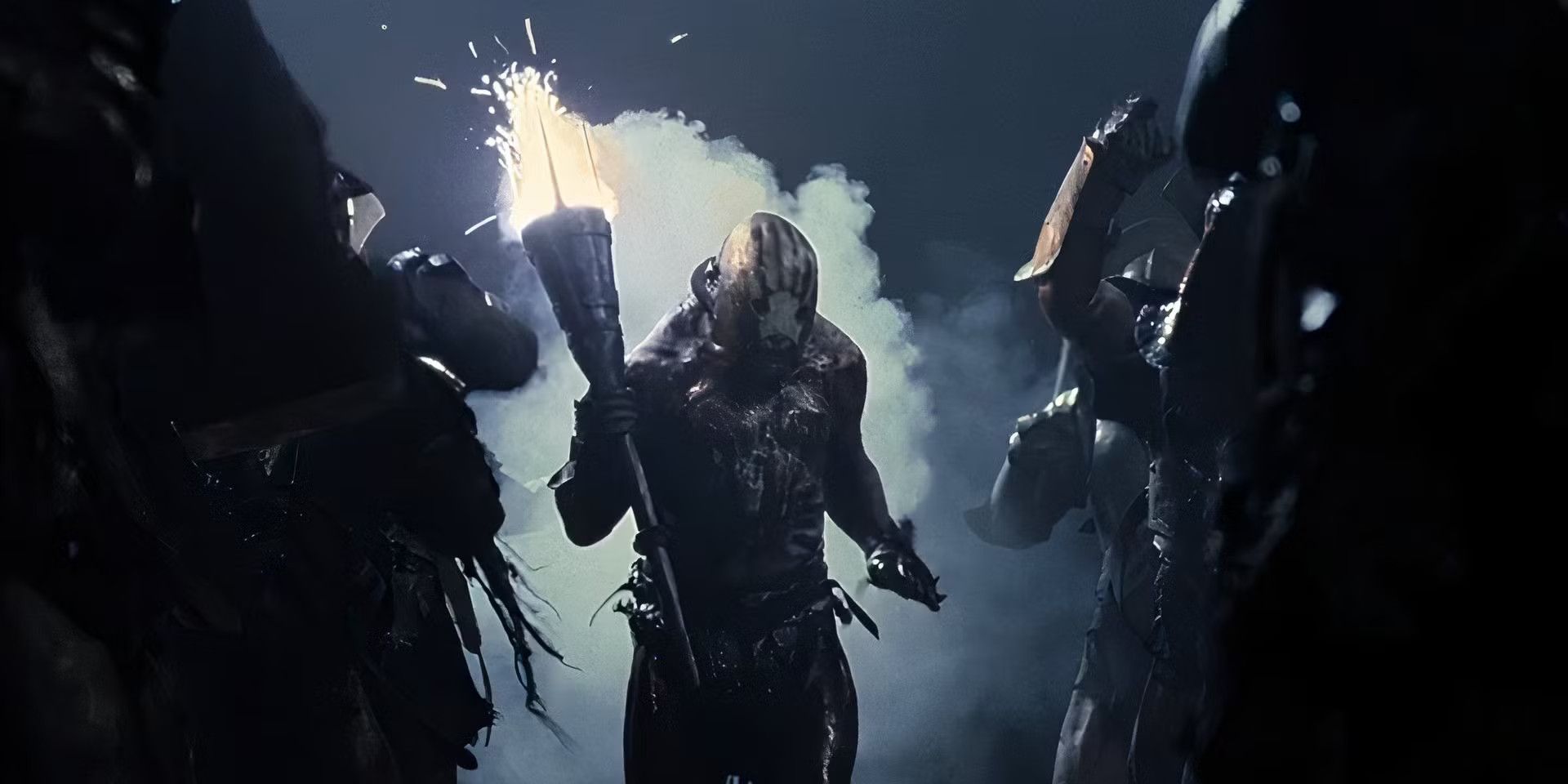
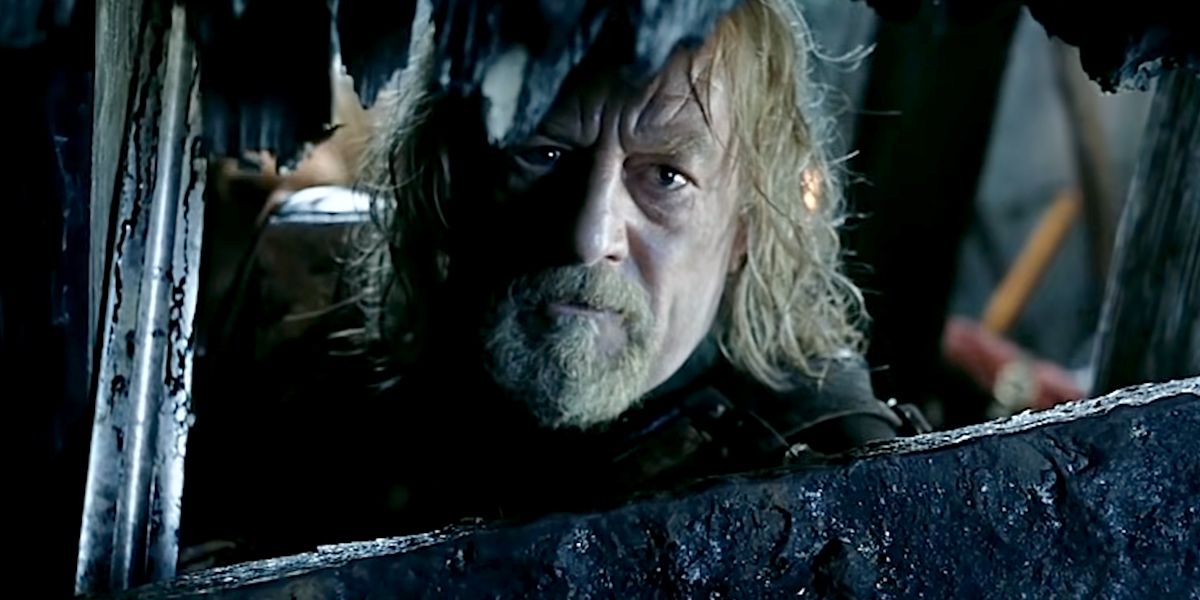
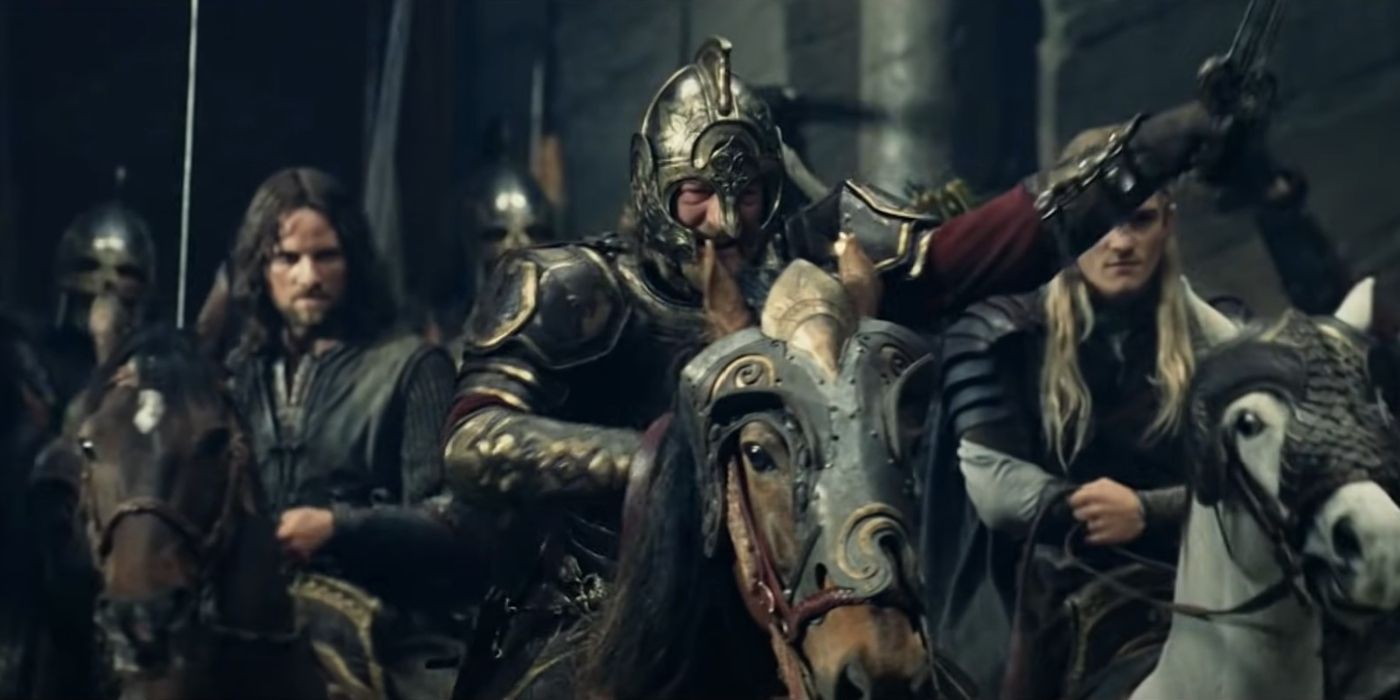
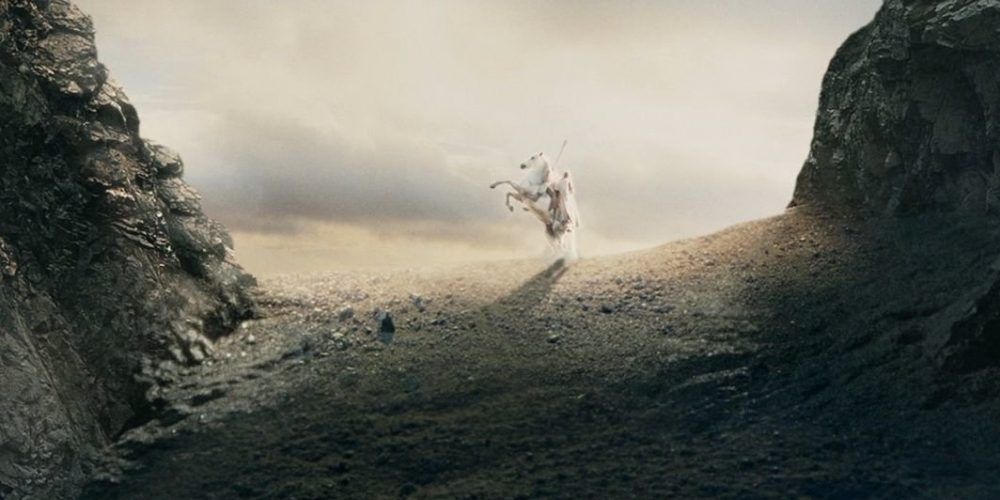
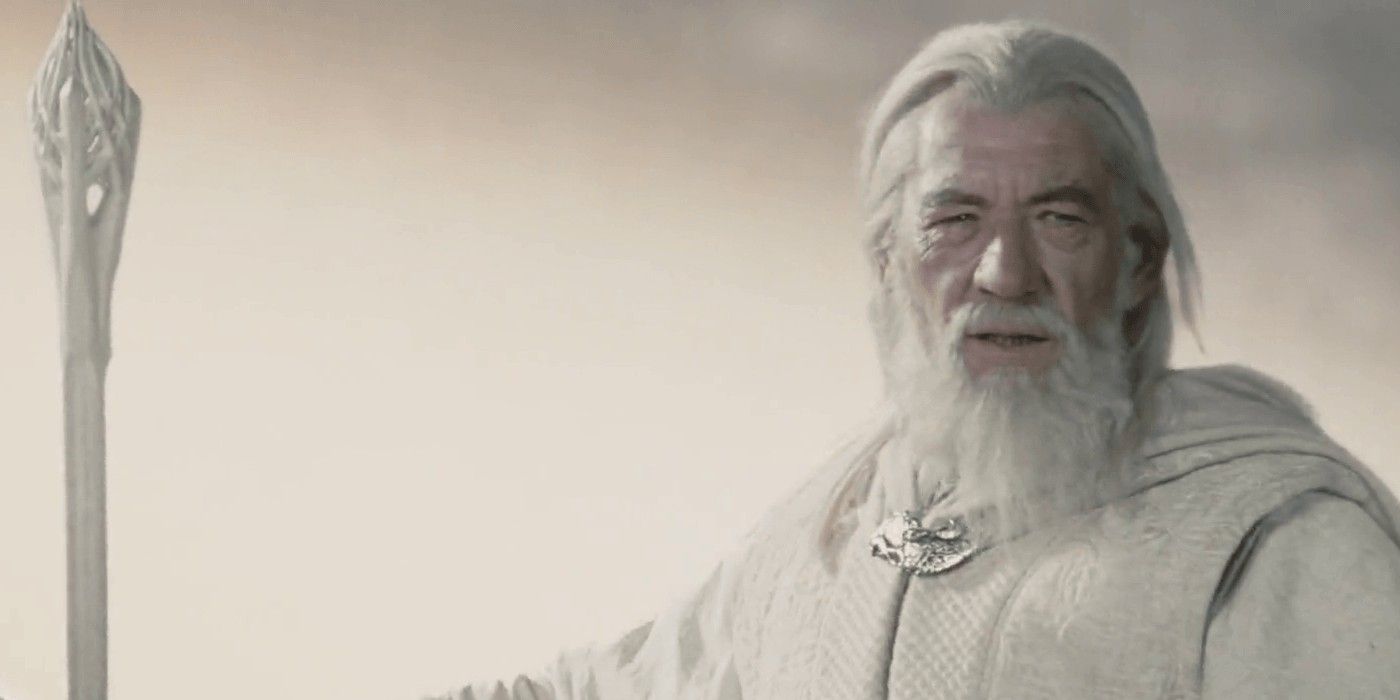






Aragorn’s confidence and collectedness in the face of overwhelming odds made a strong impression, especially among the Dunlendings. Tolkien wrote,
“So great a power and royalty was revealed in Aragorn, as he stood there alone above the ruined gates before the host of his enemies, that many of the wild men paused and looked back over their shoulders to the valley, and some looked up doubtfully at the sky.”
The Uruk-hai, on the other hand, were undeterred. Once they realized that Aragorn had no intentions of surrendering, they resumed their siege and began to shoot at him with arrows and darts. Aragorn rejoined Théoden and prepared to ride. Mere moments later, the Uruk-hai broke down the gate, but the defenders of Helm’s Deep were ready for them.
From there, the sequence of events in the novel version of The Lord of the Rings closely matched what Jackson depicted in his film. Aragorn, Théoden, and any other available cavalry charged onto the battlefield, the Horn of Helm Hammerhand blaring as they did. This surprise counterattack confused the Uruk-hai, and it bought the defenders enough time for Gandalf to arrive. The Rohirrim reinforcements overwhelmed Saruman’s forces and brought an end to the Battle of Helm’s Deep. Any surviving Uruk-hai fled into the forest, from which “none ever came again.” In the novel, Aragorn did not keep the promise that he had made; though the Dunlendings had not surrendered, he and the Rohirrim showed them mercy. They were allowed to go free so long as they helped repair the damage that they had wrought and swore to never again attack Rohan. The awe that Aragorn had inspired in them might have been partially responsible for their willingness to accept this offer.
Aragorn’s Parley With the Uruk-hai Affected the Pacing of the Battle
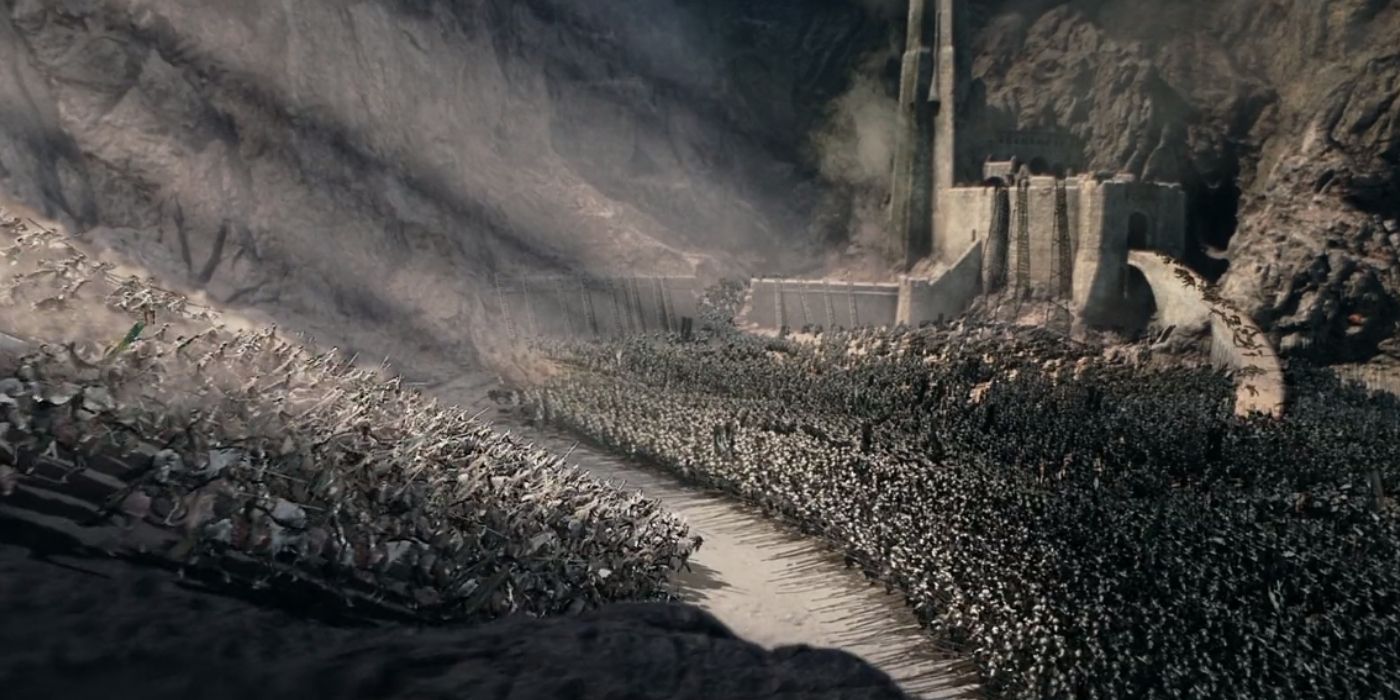
Despite the scene’s many strengths, Jackson was right not to include it, as it would have ground the tense, hectic action to a halt. This was not an issue in the novel because Tolkien did not focus much on the details of combat. He mainly described the Battle of Helm’s Deep in large-scale terms, detailing the overall strategies of the two armies rather than the actions of individual warriors. Further, most of this information was already conveyed through dialogue. That made the transition from fighting to speaking much less jarring than it would have been in a visual medium. The scene also cast the Uruk-hai in a different light than Jackson intended. In the novel, Saruman’s forces acted much like humans; they were rowdy and boastful, and they were willing to have a conversation with Aragorn, even if only for a little while. In the film, Jackson did everything he could to portray the Uruk-hai as terrifying monsters. They were capable of speech, but they did not do so at Helm’s Deep. They were nameless, faceless enemies who threw themselves at the heroes in endless waves.
Though the cinematic version of Aragorn lost out on a chance to display his kingliness at Helm’s Deep, he had other chances to do so, especially in the next film, The Lord of the Rings: The Return of the King. He held the Dead Men of Dunharrow to their ancient oath and rallied the Free Peoples of Middle-earth for one last battle against the forces of Sauron at the Black Gate. Jackson’s The Two Towers instead focused more on Théoden, who needed a heroic moment after spending so much of the film overcome by grief and self-doubt. Besides, unlike in the novel, Aragorn had not fully embraced his royal status by the time of the Battle of Helm’s Deep. His character arc was incomplete in The Two Towers, and it was not until The Return of the King that he truly became the leader he was always meant to be.





